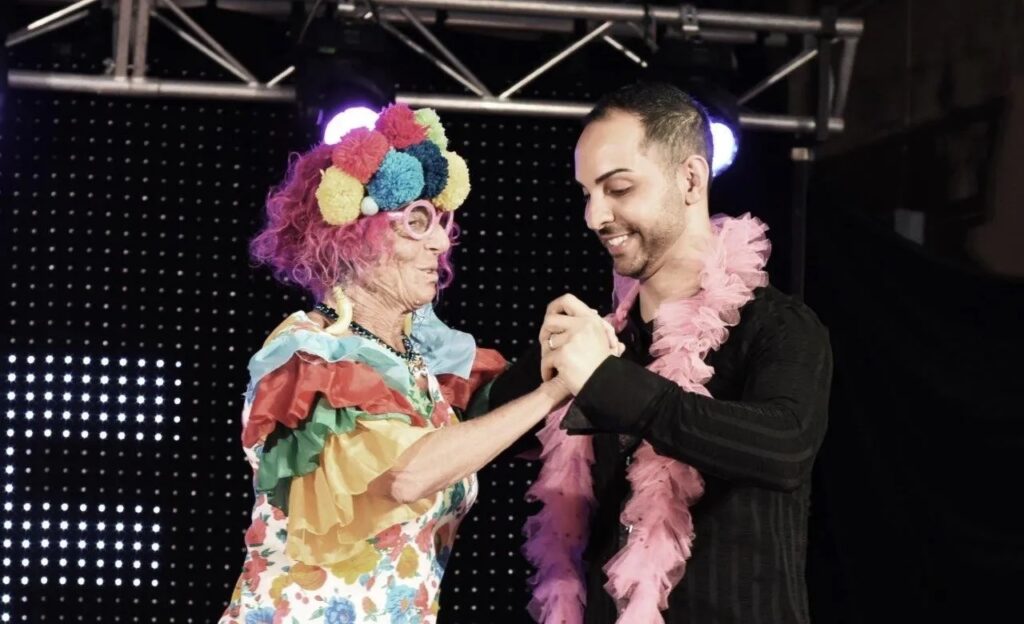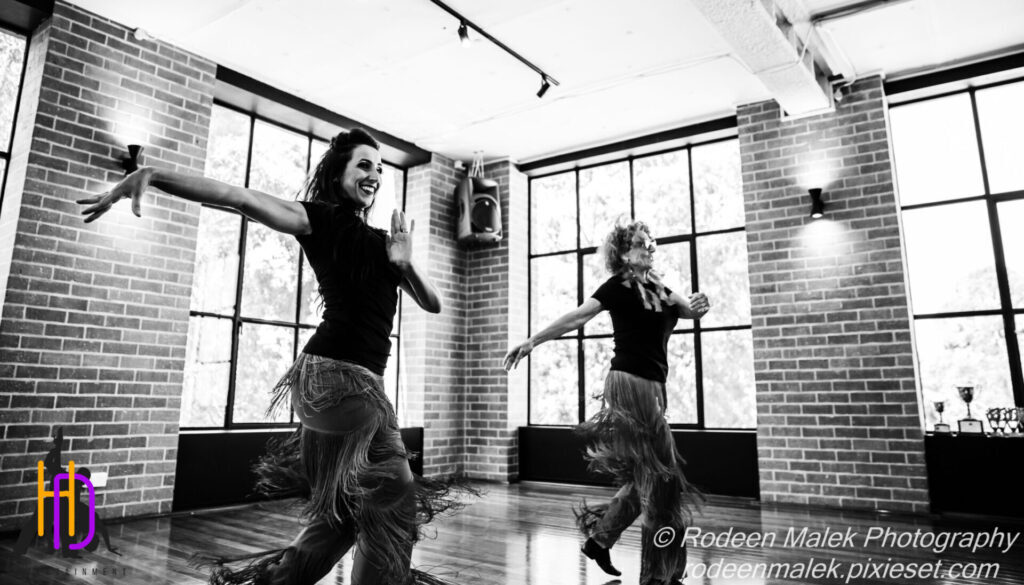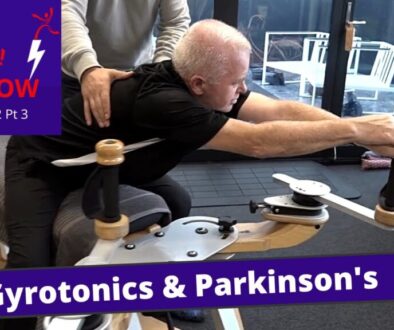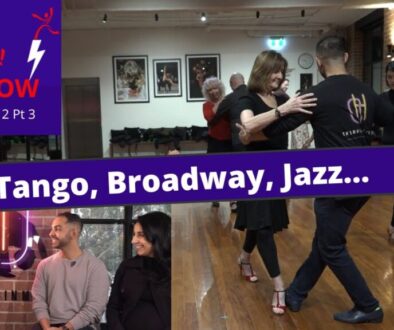Older Victorians encouraged to get their shimmy on and take to the dancefloor
News Article From Aged Care News By Bianca Roberts
Leading Australian dance studio, HD Entertainment, is urging more older Victorians to get active by quick-stepping into the world of dancing as part of their regular exercise and wellness routine.
Dalena Leggieri Ebadi, founder and principal instructor at HD Entertainment, says that her weekly teaching schedule is rapidly growing with clients aged over 60, who are keen to discover the world of dance at their pace and time.
“We are finding at HD that our older students have lamented that they never took up dancing when they were younger, so now they are embracing the chance to get their shimmy on and take to the dance floor.”
According to Leggieri Ebadi, dance is a fabulous way to enhance elders’ static balance and dynamic function which helps you in everyday life to avoid falls.

![]()
“Learning dance from a professional teacher that understands the individual they are teaching in terms physical and cognitive level has great potential in helping someone to optimise their ability to change directions, weight transfer and balance on one leg — all by enjoying the art of dancing.”
Indeed, studies show that older adults engaging in dance, no matter the style, note improvements in balance and muscular strength as well as a boost to their mental health.
“We have also seen older students talk about their enhanced mobility, including how their ability to move from sitting and standing has also improved,” Leggieri Ebadi says.
For best health outcomes, Leggieri Ebadi tells Aged Care News that a combination of weight training and dance is advisable.
“We think it’s fantastic that older people do go to the gym as well. Using weights will increase their bone density,” she says.
“Dance specifically has the capacity to help improve memory, balance and help prevent falls — and it’s just a lot of fun … and a good social activity.
“Even for myself, as a dancer and dance teacher, I love the social side just as much as the training; it’s a really important mood lifter.
“So it’s definitely beneficial for everyone, but for an older person it’s very beneficial for their independence and those protective factors against dementia.”

Whilst hitting the dance floor may be an intimidating prospect for many elders, especially those with impaired mobility, Leggieri Ebadi says that modifications can be made to make dance accessible no matter an elder’s starting point.
“We do understand when older people do feel concerned or worried to start exercising, or dancing, and so it is important for us as trainers and teachers to address these concerns and work around them so that they are still able to reap the benefits.
“Modifications, throughout dance training, can easily be provided, such as using a ballet bar to help them balance when they’re standing up, or perform certain activities seated until they build up the confidence to actually participate in a standing exercise.
“We definitely like them to ease their way into it … it’s about nurturing them as well, so that they feel comfortable doing things.
“Once they gain the confidence, then we can progress further along.”
For 68-year-old Cheryl Bastow from Brighton, dance has become an obsession.
For more than 13 years now, she has sashayed and tangoed every week at HD Entertainment’s Prahran studio, rarely missing a lesson.
For Bastow, dance lessons are so much more than a good form of exercise: it is a social outlet that fills her cup and keeps her mental health in check.
“Loneliness is a terrible thing and for many women over 50, who are single or divorced, social isolation is a real problem.
“My one-on-one weekly lesson with Hooman (Ebadi) is the opportunity to connect with another person and be able to express myself creatively.”
A health scare six months ago reconfirmed Cheryl’s commitment and love of dance.
“My diagnosis with a brain tumor really shook me, but made me realise that continuing to invest in ‘me’ was the way forward, and that dance would be front and centre in my life.
“It gives me an emotional high which nothing else does.”
For elders interested in giving dance a go, Leggieri Ebadi recommends starting with a private, one-on-one lesson first.
“To get the very best out of their dance lessons, we do recommend an individual approach.
“This will allow us to give our 100 per cent attention to that particular individual and work on their specific needs.
“However, we do try and blend lessons for other people as well.
“So if they have been dancing with us one on one for a bit of time, we do recommend that they do try some group classes, because obviously there’s that social interaction and the ability to practice other styles.”
Dance for older Australian’s wellbeing
By Hooman Ebadi
Can dance be a key ingredient in the recipe of healthy living for older adults?
We need to explore what ageing is, the recommendations for physical activity (PA) and can dance help prevent disease and improve function in daily living.
Santos et al. (2017) explain that ageing is often accompanied by a decline of cognitive and motor functions (1), World Health Organisation (WHO, 2015) describe ageing as a “physiological process that results from the accumulation of molecular and cellular damage overtime” (2).
Key implications of ageing and quality of life is loss of muscle (sarcopenia), loss of bone mineral content (BMC) potentially resulting in osteoporosis, increased risk of falls that can have drastic results such as death, and finally cognitive regression and maintenance of brain function in aspects such as memory.
Australian recommendations for PA for older adults are a minimum of 150mins moderate activity per week that can include 2 strength training sessions in the week, however recommendations in the United States recommends a minimum of 150 mins moderate activity per week and 2 strength sessions per week (3). The American College of Sports Medicine additionally recommend 2-3 days per week of neuromotor exercise training (such as balance and agility training) for 20-30mins each session (4).
Numerous randomised controlled trials (RCT) which is the “gold standard” of scientific research have found significant improvements for older people that have used dance as an intervention in standing balance, moving from sitting to standing (5), improved mobility, gait speed, motor-cognitive function (6).
Exercise might be one of the best non- pharmacological approaches to support bone health (1) additionally physical activity is the only intervention that can potentially both a) increase bone mass and strength and b) reduce the risk of falling in older populations (7).
Specifically, Ballroom and Salsa dance trials have been utilised for older adults resulting in better static balance and dynamic function and therefore decreasing the risk of falls (8).
Premature death after hip or vertebrae fractures occurs in 10% of people 1 month after fracture, 20-30% of patients die within 1 year of fracture (9).
Learning dance from a professionally teacher that understands the individual they are teaching in terms physical and cognitive level has great potential in improving helping someone optimising their ability to change directions, weight transfer and balance on one leg all by having fun dancing.
Reference list:
- Santos L, Elliott-Sale KJ, Sale C. Exercise and bone health across the lifespan. Biogerontology [Internet]. 2017 Dec [cited 2022 Jun 18];18(6):931–46. Available from: https://pubmed.ncbi.nlm.nih.gov/29052784/
- World Health Organization (2015). Ageing and health. Accessed 2022 Jun 18th. https://www.who.int/news-room/fact-sheets/detail/ageing-and-health
- Burton E, Farrier K, Lewin G, Pettigrew S, Hill A-M, Airey P, et al. Motivators and Barriers for Older People Participating in Resistance Training: A Systematic Review. Journal of Aging & Physical Activity [Internet]. 2017 Apr [cited 2022 Jun 18];25(2):311–24. Available from: https://journals.humankinetics.com/view/journals/japa/25/2/article-p311.xml
- Garber CE, Blissmer B, Deschenes MR, Franklin BA, Lamonte MJ, Lee I-M, et al. American College of Sports Medicine position stand. Quantity and quality of exercise for developing and maintaining cardiorespiratory, musculoskeletal, and neuromotor fitness in apparently healthy adults: guidance for prescribing exercise. Medicine and science in sports and exercise [Internet]. 2011 Jul [cited 2022 Jun 19];43(7):1334–59. Available from: https://academiccommons.columbia.edu/doi/10.7916/D8CR5T2R
- Franco MR, Sherrington C, Tiedemann A, Pereira LS, Perracini MR, Faria CSG, et al. Effect of Senior Dance (DanSE) on Fall Risk Factors in Older Adults: A Randomized Controlled Trial. Physical Therapy [Internet]. 2020 Apr [cited 2022 Jun 18];100(4):600–8. Available from: https://academic.oup.com/ptj/article/100/4/600/5695649
- Hackney ME, Byers C, Butler G, Sweeney M, Rossbach L, Bozzorg A. Adapted Tango Improves Mobility, Motor-Cognitive Function, and Gait but Not Cognition in Older Adults in Independent Living. Journal of the American Geriatrics Society [Internet]. 2015 Oct [cited 2022 Jun 18];63(10):2105–13. Available from: https://agsjournals.onlinelibrary.wiley.com/doi/abs/10.1111/jgs.13650
- Kohrt WM, Bloomfield SA, Little KD, Nelson ME, Yingling VR. ACSM position stand: physical activity and bone health. Medicine & Science in Sports & Exercise [Internet]. 2004 Nov [cited 2022 Jun 18];36(11):1985–96. Available from: https://journals.lww.com/acsm-msse/Fulltext/2004/11000/Physical_Activity_and_Bone_Health.24.aspx
- Rodríguez B, Paris-Garcia F. Influence of Dance Programmes on Gait Parameters and Physical Parameters of the Lower Body in Older People: A Systematic Review. International journal of environmental research and public health [Internet]. 2022 Jan 29 [cited 2022 Jun 19];19(3). Available from: https://www.mdpi.com/1660-4601/19/3/1547
- Bliuc D, Nguyen ND, Milch VE, Nguyen TV, Eisman JA, Center JR. Mortality risk associated with low-trauma osteoporotic fracture and subsequent fracture in men and women. JAMA [Internet]. 2009 Feb 4 [cited 2022 Jun 18];301(5):513–21. Available from: https://jamanetwork.com/journals/jama/article-abstract/183323




